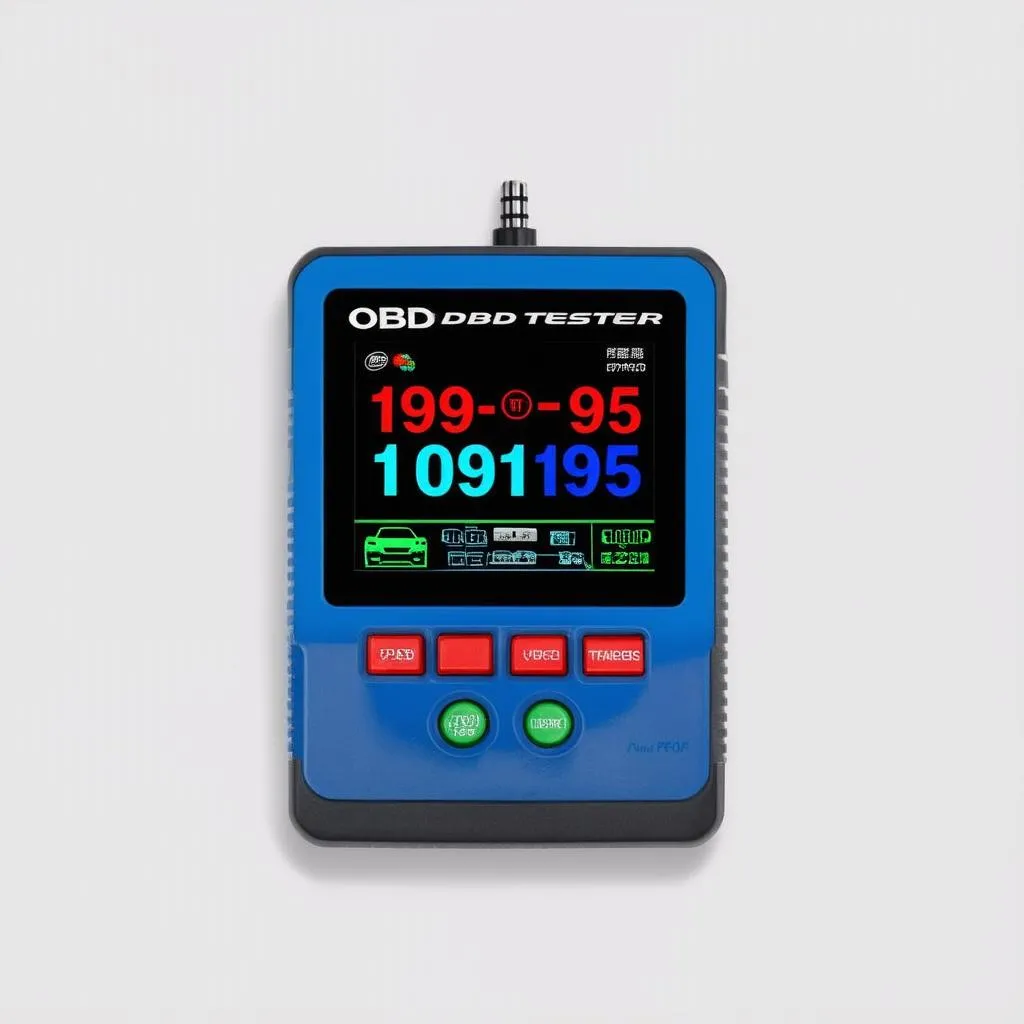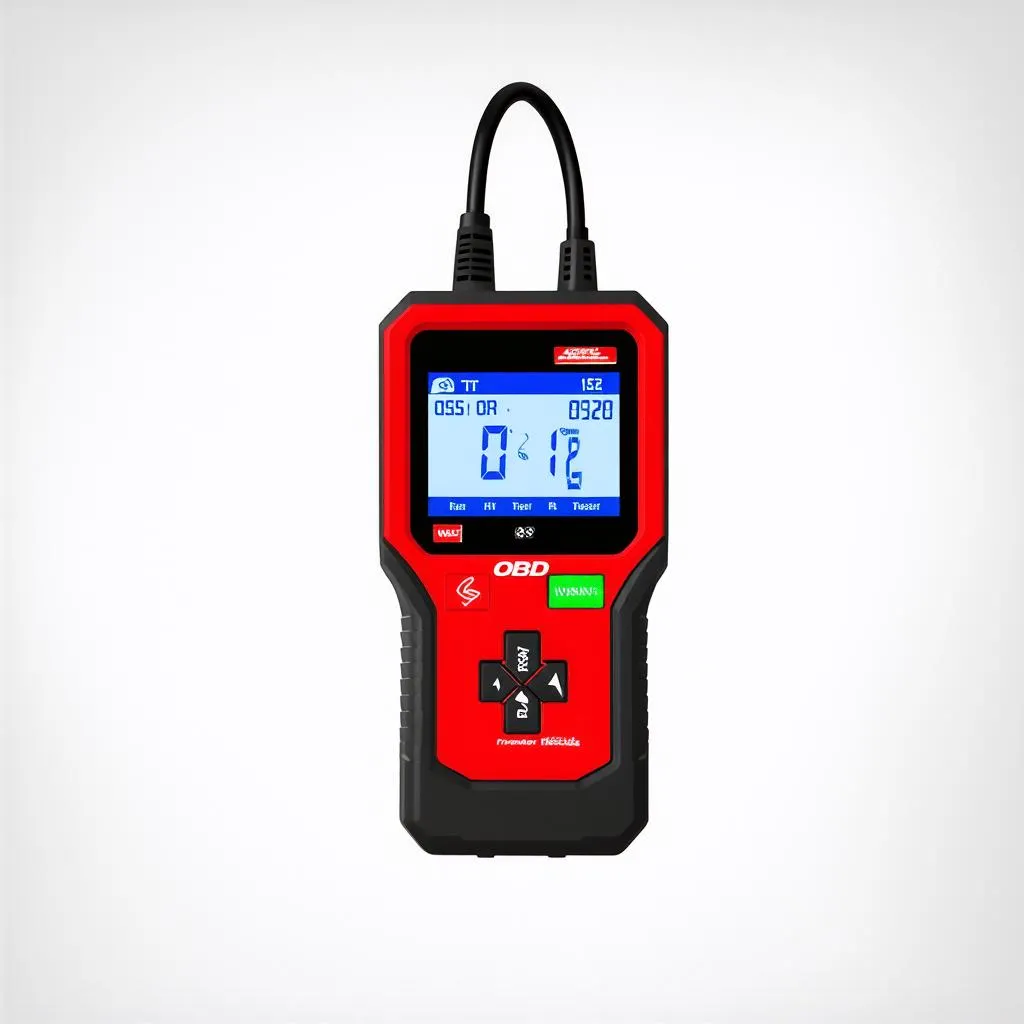Have you ever faced the dreaded “check engine light” on your beloved 1990s import car? You’re not alone! Many car enthusiasts struggle to decipher the cryptic messages their car’s onboard computer system throws their way. This is where the OBD (On-Board Diagnostics) tester comes into play, a powerful tool that unlocks the secrets of your vehicle’s health. Today, we’ll delve into the world of OBD testing for 1990-95 import cars, exploring everything you need to know about this essential tool.
Understanding the Importance of OBD Testing
The OBD system is like a car’s internal doctor, continuously monitoring vital functions like engine performance, emissions, and sensor readings. It’s a complex web of interconnected sensors and components, and when something goes awry, the “check engine light” acts as a warning beacon.
A Glimpse into the World of OBD
Imagine a car as a living organism, with a network of sensors acting as its nervous system. Each sensor gathers data about a specific aspect of the car’s health, sending it to the brain, or the Engine Control Unit (ECU). The ECU processes this data, making adjustments to ensure optimal engine performance. However, if a sensor malfunction occurs or the ECU detects an anomaly, the “check engine light” illuminates, alerting you to a potential problem.
This is where the OBD tester comes in, serving as a translator between you and your car’s internal language. By plugging the tester into the car’s OBD connector, you can access the data stored in the ECU, providing valuable insights into the root cause of the problem.
Remember:
A mechanic friend once told me, “The ‘check engine light’ is like a cryptic message from the car itself. It’s up to you to decipher the message and find the solution.” This is precisely where the OBD tester comes in, empowering you to understand and address the issue before it escalates.
1990-95 Import Car OBD Tester: A Window into the Past
While newer cars boast advanced OBD systems, those built between 1990-95 possess their unique characteristics. Here’s a breakdown of the key differences:
OBD-I & OBD-II: A Tale of Two Standards
OBD-I: Cars built during this era primarily utilized OBD-I standards, characterized by simpler codes and a limited amount of data available.
OBD-II: The OBD-II standard, introduced in 1996, ushered in a new era of sophistication, offering more extensive diagnostic capabilities.
Unlocking the Mysteries of OBD Codes
Understanding Diagnostic Trouble Codes (DTCs)
OBD testers display diagnostic trouble codes (DTCs), which are alphanumeric codes that correspond to specific problems within the car’s systems. Decoding these codes requires knowledge and a good OBD code dictionary.
The Power of OBD Scanners for 1990-95 Import Cars
While some generic scanners might work with these older models, dedicated scanners designed for OBD-I systems provide more accurate and detailed information. These specialized scanners often feature:
- Specific DTC Libraries: Containing code libraries for common import cars from the 1990-95 era.
- Live Data Monitoring: Allowing you to view real-time sensor readings and identify any erratic behavior.
- Freeze Frame Data: Capturing data at the moment the code was triggered, providing valuable insights into the problem’s origin.
Common OBD Codes for 1990-95 Import Cars
Here are some frequently encountered OBD codes for 1990-95 import cars:
- P0171: System Too Lean (Bank 1).
- P0174: System Too Lean (Bank 2).
- P0300: Random/Multiple Cylinder Misfire Detected.
- P0420: Catalyst System Efficiency Below Threshold (Bank 1).
- P0440: Evaporative Emission Control System Malfunction.
Popular OBD Tester Options for 1990-95 Import Cars
Finding the right OBD tester for your 1990-95 import car can be overwhelming. Here are some highly-regarded options:
1.  OBD Tester for 1990-95 Import Cars
OBD Tester for 1990-95 Import Cars
2.
3.  Professional OBD Tester for 1990-95 Import Cars
Professional OBD Tester for 1990-95 Import Cars
Remember:
Always research and select a scanner that is specifically compatible with your car’s OBD system.
Beyond the OBD Tester: Troubleshooting Tips
The Importance of Context
While an OBD tester provides valuable insights, it’s not a magic bullet. Consider these additional troubleshooting tips:
- Vehicle History: Understanding the car’s previous maintenance history can provide clues to potential problems.
- Visual Inspection: A thorough visual inspection of engine components, wiring, and sensors can reveal potential issues.
- Listen for Sounds: Pay attention to any unusual noises coming from the engine, exhaust, or other parts.
- Check Fluids: Ensure all fluids (oil, coolant, brake fluid) are at the proper levels.
Harnessing the Power of Online Resources
Don’t underestimate the power of the internet! Numerous websites and forums dedicated to specific car models can offer valuable advice and troubleshooting tips.
Is OBD Testing a Spiritual Experience?
Now, you might be wondering, “Does OBD testing have any connection to spirituality?” While it may seem unconventional, the act of connecting with your car’s inner workings can indeed evoke a sense of mindfulness and appreciation.
Think of it as a form of automotive meditation, allowing you to delve deeper into the complexities of your vehicle and understand its inner workings.
Remember:
Your car is a mechanical marvel, and respecting its intricacies can foster a sense of connection and wonder.
FAQs About 1990-95 Import Car OBD Testers
-
Q: What is the best OBD tester for my 1990-95 import car?
-
A: The best tester depends on your specific needs and budget. For DIY enthusiasts, a basic OBD-I scanner is sufficient. Mechanics or those seeking more advanced features should opt for a professional-grade scanner.
-
Q: Can I fix OBD issues myself?
-
A: Some simple issues can be addressed with DIY repairs. However, complex problems may require the expertise of a qualified mechanic.
-
Q: Is OBD testing expensive?
-
A: OBD testers range in price from affordable options to professional-grade models.
-
Q: What happens if I ignore the “check engine light”?
-
A: Ignoring a “check engine light” can lead to more serious problems, potentially causing engine damage or safety hazards.
Related Articles on TechCarUSA.com
-
Car Maintenance Tips for 1990-95 Import Cars: Discover essential maintenance practices to keep your classic import in top shape.
-
Common Engine Problems in 1990-95 Import Cars: Learn about the most common engine issues encountered in these vehicles.
-
Choosing the Right OBD Tester: A comprehensive guide to help you select the perfect OBD tester for your needs.
Take Control of Your Car’s Health
An OBD tester is a powerful tool that can empower you to understand your car’s health better. It’s not just a diagnostic device but a window into the intricate workings of a modern machine.
Don’t hesitate to contact us at Whatsapp: +84767531508 for any questions or assistance with OBD testing or diagnostics for your 1990-95 import car. Our team of experts is available 24/7 to guide you through the process.
Let’s Talk!
We invite you to share your experiences and insights in the comments below. What have been your experiences with OBD testers for 1990-95 import cars? What tips would you share with other car owners? Let’s build a community of knowledge and support around these fascinating vehicles.